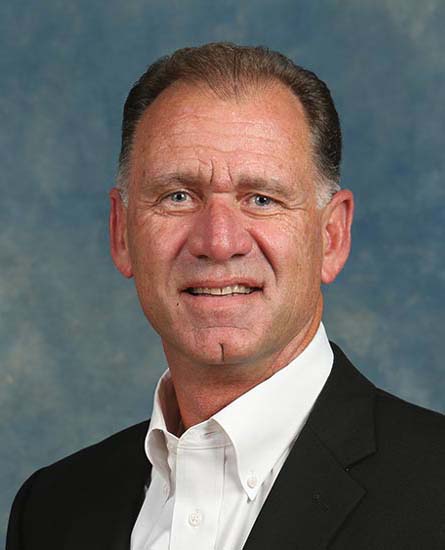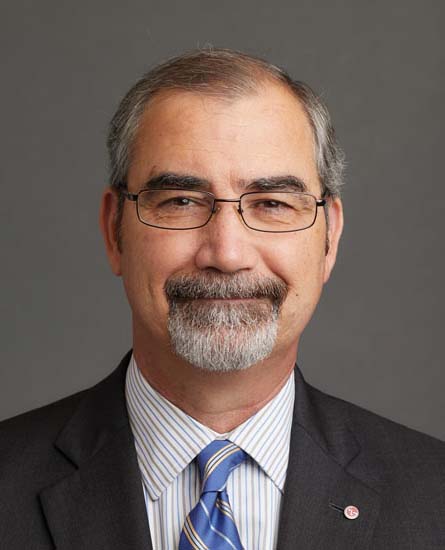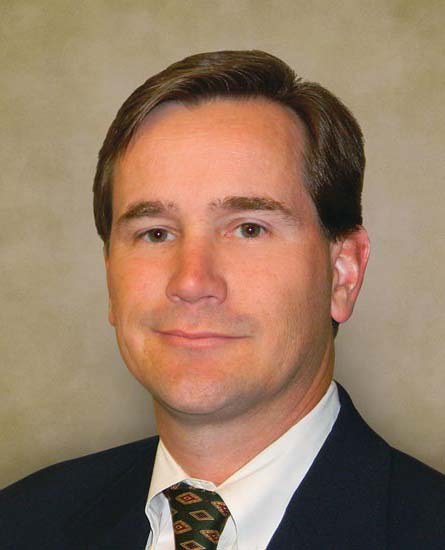In the HVAC world, the AHR Expo is often viewed as the kickoff to the new year. This year in Orlando, manufacturers, contractors, distributors, and engineers from around the country will be learning about the newest products the industry has to offer.
But before everyone arrives, The ACHR NEWS wanted to help set the table for the year ahead. With that in mind, we convened an HVAC manufacturers’ roundtable to discuss the hot topics about the industry. Think of it as “The View” without the yelling.
We talked with John Galyen, president, North America at Danfoss; Kevin McNamara, senior vice president at LG Air Conditioning Technologies; Mike Branson, president, air at Rheem Manufacturing Co.; Craig Wanner, president and CEO at The Whalen Co.; and Andy Armstrong, vice president of sales and marketing at Fujitsu General America.
ACHR NEWS: What market segments have the best prospects for 2020?
Wanner: We continue to see growth in the multifamily market due to an increase in population in downtown areas. Millennials are choosing to leave the surrounding suburbs and instead move to areas closer to their places of work for the added convenience and amenities. The dormitory market is also on the rise. Colleges are expanding and adding more student housing that is in line with expectations of today’s college student. Colleges that don’t have the room to expand or have recently added dorms have been upgrading their existing dormitories to add amenities and services that have come to be expected on campus now.
Galyen: We continue to see increasing demand for technologies that support higher efficiency HVACR equipment and lower GWP refrigerants. This includes multi-stage compressors and variable-speed drives for pumps, fans, motors, and compressors — as well as new heat exchanger technology, such as microchannel, that increases efficiency and reduces the size and refrigerant charge volume.
Armstrong: At Fujitsu, we see both the residential replacement market and the commercial design build and replacement markets as very strong for 2020. With aging existing equipment and a wide variety of efficiency initiatives across the United States and Canada, we expect there to be continued growth in both of these segments.
McNamara: As we move into 2020, the VRF segment of the industry will continue to grow at a faster pace due to its technological advantages. We should see a significant cyclical uptick in the education and health care segments. We saw construction spending in the education sector rise nearly 11 percent last year, to $92.4 billion (including renovation projects, which typically account for the bulk of many AEC firms’ higher education work), with healthcare being the growing economic force due to the aging of the U.S. population.
I think that the hospitality and multifamily/multipurpose facilities segments will cool in 2020. This is primarily due to the significant growth the sectors have experienced in prior years, so cooling is a relative term.
Infrastructure upgrades and traditional HVAC system replacements are more common, as there’s a shorter shelf life for what’s considered state-of-the-art nowadays. The health care and educational sectors are taking a more holistic approach to managing the shifting needs of the buildings of the future and VRF has a dominant role in addressing that need.
ACHR NEWS: Are the tariffs going to be an issue for the industry in 2020?
Branson: Trade policy has a significant impact on our entire industry. We are in a global market with regional factories and supplier partners serving customers around the world. We respect that tariffs and other tools may be needed to serve the interests of local countries. However, one thing that we need the most to best serve our customers is predictability, certainty, and fairness. Over the past two years, Rheem testified to the United States Trade Representative (USTR) office to share comments related to U.S. tariffs and the impact of specific parameters on U.S. manufacturing and consumers. We have been pleased with the responsiveness of the USTR to these concerns and the opportunity that has been provided for stakeholders to participate in the process.
Armstrong: Yes, tariffs will continue to be a risk that needs to be managed. Fujitsu has taken steps to mitigate that risk, and we don’t expect to have any issues managing the tariff at this stage. However, given the unpredictability of the tariffs, we will be watching carefully and do everything in our power to protect our channel partners.
ACHR NEWS: What is the biggest market disrupter for the HVAC industry?
Galyen: There are really two separate but related critical issues set to challenge the market: the growing impact of climate regulations and goals, including the demand for smarter, energy-efficient equipment, and the evolving refrigerant landscape. Particularly in the United States, states and cities today are moving to regulate the phasedown of HFCs in the void of federal action. The industry has proven it can manage refrigerant transitions (e.g., CFC and HCFCs), but a patchwork of state and local requirements and timing will present serious challenges. In addition, some of the new low-GWP refrigerants are flammable, and the industry will need time and resources to make a safe transition.
Branson: Advancements in equipment and supply chain connectivity continue to be the biggest market disruptors and technology poised for growth in 2020 and beyond.
Armstrong: Our crystal ball shows many potential bumps in the road ahead, but perhaps the biggest of these considerations is strategic electrification. Much of the United States and Canada are now governed by one entity or another that has committed to zero percent (or a significant reduction of) carbon-based fuels at some point in the future. This will greatly affect our industry. Some cities are already facing these challenges, and it will significantly drive shifts in equipment selection by business and homeowners.
ACHR NEWS: What is the biggest challenge for the industry in 2020?
Branson: I believe the biggest immediate challenge for the industry is preparing for new refrigerants that will be required with the phasedown of hydrofluorocarbons (HFCs) commonly used in refrigeration, air conditioning, and other applications. Currently, the United States does not have a policy to manage this transition, so several states are beginning to initiate transitions on their own. Rheem, along with all other OEMs, major suppliers, and AHRI, strongly supports the passage of the American Innovation and Manufacturing (AIM) Act, which would guide the transition to new refrigerants in the U.S. in a controlled manner. A national HFC phasedown by federal legislation would create new manufacturing jobs in the U.S., spur further investment in the U.S. economy by the HVACR industry, ensure the continued safety and training of licensed HVACR professionals, and strengthen economic competitiveness.
McNamara: There is no news flash here — qualified contractors to do great installations. The training and education of installing contractors to meet the needs of an evolving market is more important than ever. It will also be important that owners understand the need for flawless installations for their building projects, whether it be new construction or repurposing an existing building.
Wanner: I think the biggest challenge will be just to keep the momentum going during an election year. Our sales team is in offices all across the nation, and many engineering firms are overwhelmed with the number of projects in the design phase and are finding it difficult to keep up. This is a good situation for manufacturers, as this means there are a lot of projects in the pipeline that will need HVAC equipment. In a few markets, we are seeing projects later in the year slow just due to uncertainty. The country has been in a nice, steady building phase and eventually I know that will come to an end, but I’d love it to keep going as long as possible.
ACHR NEWS: What new technology is poised for growth in 2020?
Galyen: There continues to be a clear trend for what I call “variable speed everything” in smarter, connected systems. This not only helps to improve efficiency but also enables better control and the ability to match the load more precisely, while providing a higher level of reliability. Danfoss has engineered a range of variable-speed compressors and variable-frequency drives that allow us to support the growth.
McNamara: As the nature of work changes, so do the requirements of a building and its occupants. With the advent of artificial intelligence and smart technology, customers have an elevated expectation of what their working and living spaces should be. Technology assists in providing energy efficiencies, comfort, and time-saving. We expect our buildings to work for us, not the other way around. So inverter technology, which is greener and more cost-effective, will help customers make the best investment for their future, and it will drive newer applications.
Today’s buildings need to be more adaptive to suit a variety of shifting usage needs. This is especially true in the education and healthcare sectors, where the systems that are installed in a building need to be thought of from a different angle than traditional thinking. “How much can this system be designed to fit my vision?” becomes the question.
Wanner: Energy recovery is the hot topic at the moment. ERV and HRV for multi-family will be a major player due to the changes in the building codes requiring outside air.
See more articles from this issue here!








Report Abusive Comment